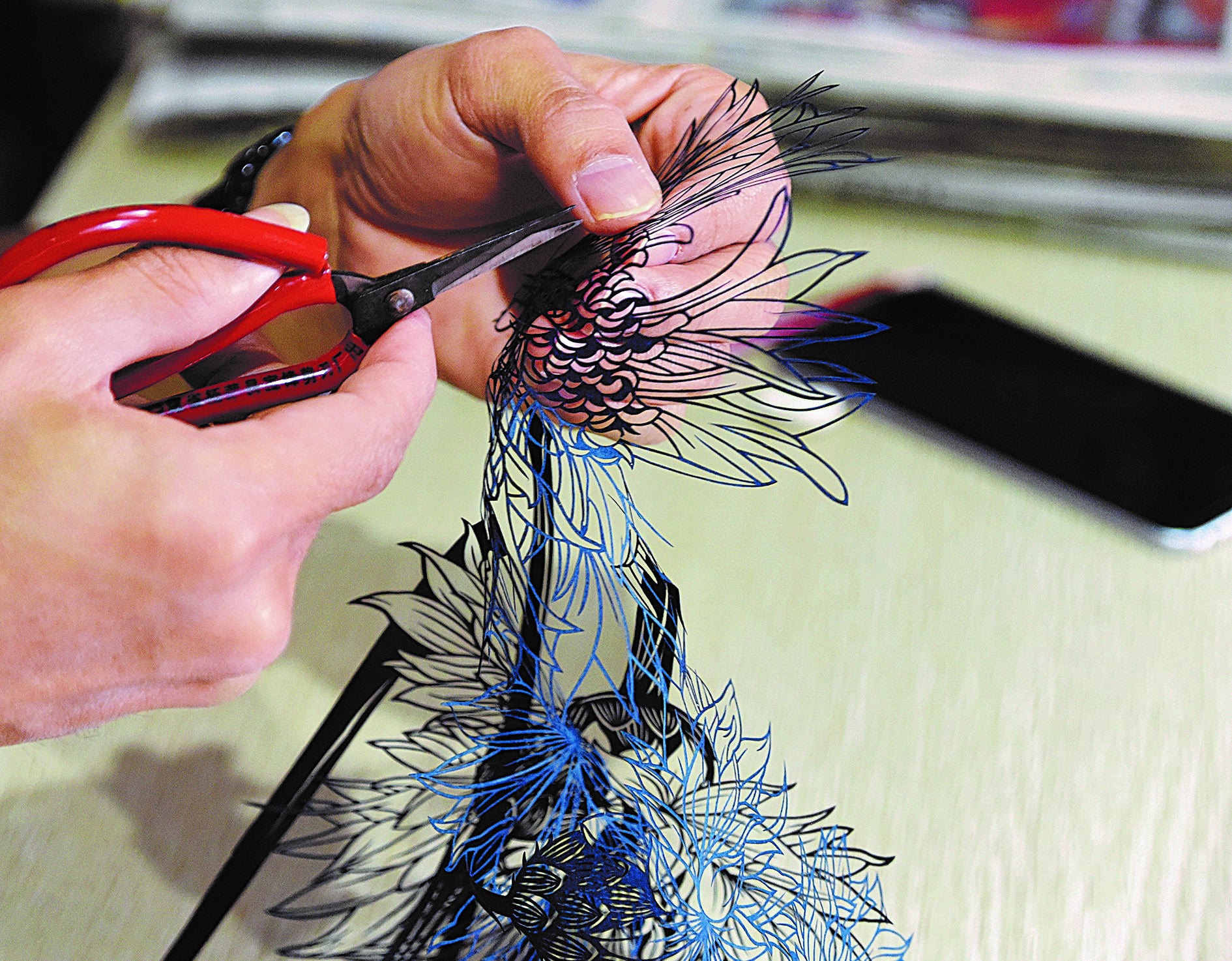Cutting edge of tradition
THE ARTICLES ON THESE PAGES ARE PRODUCED BY CHINA DAILY, WHICH TAKES SOLE RESPONSIBILITY FOR THE CONTENTS

Using a pencil, a pair of scissors and a scalpel, Ye Kaiyuan turns a piece of paper into exquisite cut-outs to express his understanding of life and the universe.
Staying true to the essence of the ancient art form of jianzhi (paper-cutting) his artworks explore elements from traditional Chinese literature, icons and imagery from Eastern culture and capture the timelessness of the practice.
“With a piece of paper I can create an artwork that has the power to make the world quiet or excited,” Ye, 38, says. “It is the charm of art, which triggers people to think.”
Inspired by traditional shanshui (landscape) painting, one of Ye’s latest creations is Across The Water, a work 3.9 feet long and 1.3 feet wide, featuring mountains and rivers. In the artwork a poetic scene is featured where a man stands on a boat in still water while clouds pass by mountains. Ye interprets this to mean: “With home always there, people should bravely explore the outside world”.
The inspiration behind his art is his experiences of joy and sorrow, departures and reunions, and struggles and triumphs.
The art of paper-cutting originated in China, where paper was invented during the Han Dynasty (206 BC-AD 220). Ye has brought the ancient craft back to life, with his intricate designs while interweaving a contemporary narrative of poetry and philosophy.
“I am the fortunate one to find paper-cutting. Through the craft, I find an artistic way to express my understanding about the world and life,” Ye says, adding that paper-cutting is like “doing subtraction with paper”, removing the redundant parts and making elaborate designs.
It is similar to life, in which people need to banish unrest, arrogance and vanity and stay true to themselves, Ye says.
His works have been on display at exhibitions and galleries in China and abroad. In 2015 China Post issued a set of commemorative stamps themed on his paper-cut pieces.

Born in Zhangpu county, Fujian province, which is known as the home town of paper-cutting art, Ye became interested in the craft when he was a boy. In 2012 he established the Yile Paper-Cutting Art workshop in Xiamen, Fujian.
When talking about the traditional craft of paper-cutting, interior decors sticking to windows and doors come to many people’s minds. The paper creations were intended to honour gods and ancestors and later evolved into a leisure activity for women and children across the country.
In 2009 Zhangpu paper-cutting was added to UNESCO’s list of intangible cultural heritage of humanity as a part of Chinese paper-cutting tradition. The Zhangpu style is monochromatic and emphasises proportional composition, smooth lines and a graceful style. To elevate the style beyond its traditional origins, Ye spent more than 10 years finding the balance between the craft and contemporary life.
Unlike the traditional approach to the craft in which the drawing is done first and then the cutting, Ye splashes black, red or yellow ink on rice paper first, then draws elaborate designs and finally cuts and engraves the paper creation.
“This means you will never know what the final outcome will be, which colours will be left and which will not. The unpredictability is the most interesting part, and I think being natural is beautiful.”
Hu Meidong contributed to the story

Bookmark popover
Removed from bookmarks